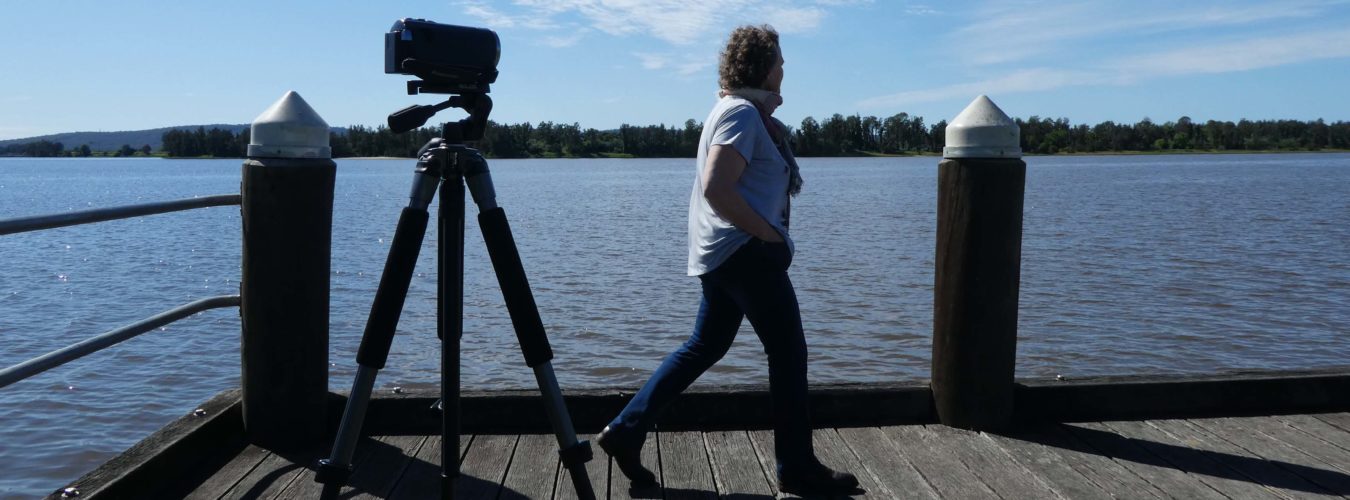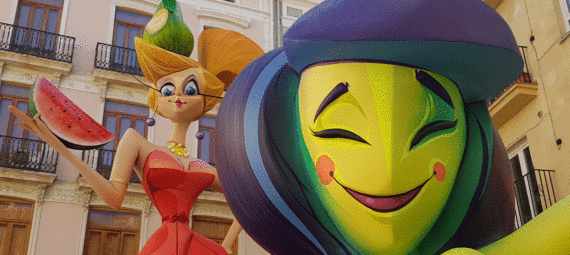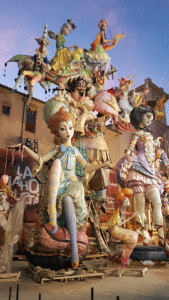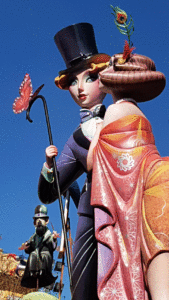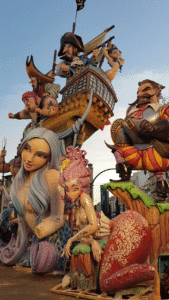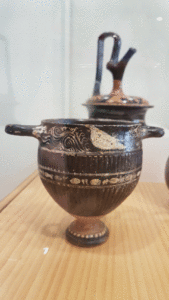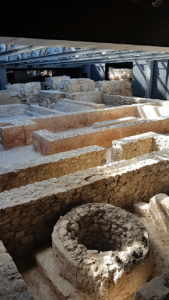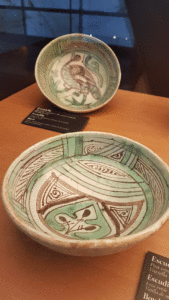We arrived in Valencia by bus – and to be perfectly honest – as we drove through kilometre after kilometre of industrial suburbia, we wondered if we had made a terrible mistake planning to spend four days in this Spanish port city on the shores of the Mediterranean. But we needn’t have worried – eventually the industrial heartland was left behind and we arrived in the charming city centre so full of history and monuments, fantastic architecture and a food and cafe culture that has made it a must-see tourist destingation.
What we did
1. Las Fallas Festival
We lobbed into Valencia for its most famous annual festival – Las Fallas. It was such a fortunate piece of timing because this festival was sensational. The streets were alive with crowds, lively parades, outdoor eating and all set to the sound of fireworks exploding day and night.
The parks were crowded with children letting off crackers in a way that would have struck horror into the heart of Australia’s occupational health and safety regulators. It felt like every Valencian took part in this happy free for all.

Throughout the streets of the city centre extraordinary sculptures – the Fallas – were in various stages of construction. Crowds moved from one to the next admiring the handywork – and they were seriously good – so good we couldn’t quite believe they would be burned at the end of the festival.

The festival is held each year on the five days and nights from 15 to 19 March and is called Las Fallas – which literally translates to “The Failures”. It’s one of this ancient city’s most enduring traditions and started in the 18th century. It was celebrated on the night of the feast day of Saint Joseph, the patron saint of carpenters, with the burning of waste planks of wood from their workshops (and presumably any failed projects) as well as whatever bits and pieces the general polulation brought in to throw on the pile.

If we have any regret it’s that we could not stay until the final day of the festival when the structures are literaly burned in the street – with a batallion of fire and emergency services on hand to avert disaster.

2. Ate some paella
It was in Valencia that this delicious simmered rice dish orgininated. Paella purists may argue that the meat must be seafood – but chicken and even rabbit are used. You can get it all over Spain of course – but it seemed fitting to eat as much of it as possible in the place it all began. Las Fallas is a particularly good time to seek it out and enjoy its mouthwatering flavours.
3. Travelled in time
Valencia is one of the oldest cities in Spain founded by the Romans in 138 BC – under the name “Valentia Edetanorum”. Over subsequent centuries it would be ruled by Visigoths, Moorish Muslims and Catholic Christian monarchs of various stripes. Evidence of all of these eras can be found in the city and in its museums. Our favourite was the unassuming Almoina Archaeological Museum on Plaza de la Almoina. Descend the stairs into the remains of an ancient Roman city which was uncovered by archaeologists in the 1970s. Wind through the site on elevated walkways while the hubub of the modern sity goes on above you. Facinating.


4. A life lived
We poked our noses into the Jose Benlliure House Museum on our way to somewhere else but ended up staying for ages. We were enthralled by this 19th Century artist’s family home frozen in time. Rooms contains furniture and everyday utensils that reveal the day to day life of Benlliure and his family. The peaceful garden is in the traditional Valencia style of that era – a quiet oasis. At the bottom of the garden is the artist’s studio and a large number of are works by he and his family members are on display at the museum. It’s an interesting glimpse of a particular family and a particular period of time.


5. Got some cool vibes
If your looking for a bit of a buzz, look no further than the El Carmen area in the old-town district. Navigate to the medieval gates Torres de Serranos and Torres de Quart which were once part of the old city walls and you’ll be entering El Carmen. The narrow winging streets are lined with cafes, tapas bars, boutiques and souvenir shops and many late-night bars. We really enjoyed Foc Bistro on Carrer dels Cavallers, 12. The food was excllent, the beer was cold and it was an escape from the Las Fallas crowds in the streets outside.


Where we stayed
We chose to Airbnb our stay in Valencia and were so delighted with our choice. Our small but light-filled apartment was walking distance to all the old city centre, markets, cafes, restaurants and bars. The one bedroom unit gave us a bit more space to relax without tripping over our luggage , and the opportunity to make a cuppa or cook at home. We had the most beautiful view over the city roof tops from our spacious balcony. It wasn’t necessarily cheaper – but it was bigger and very convenient.
